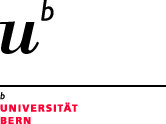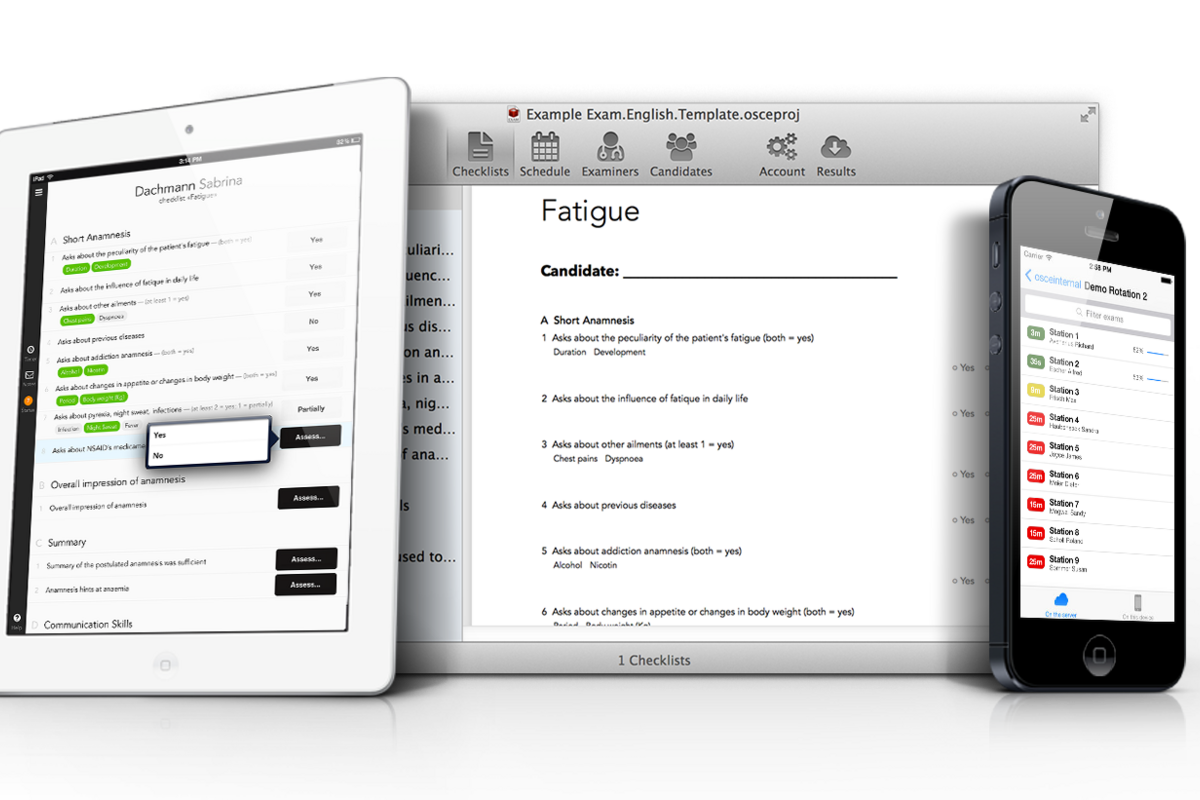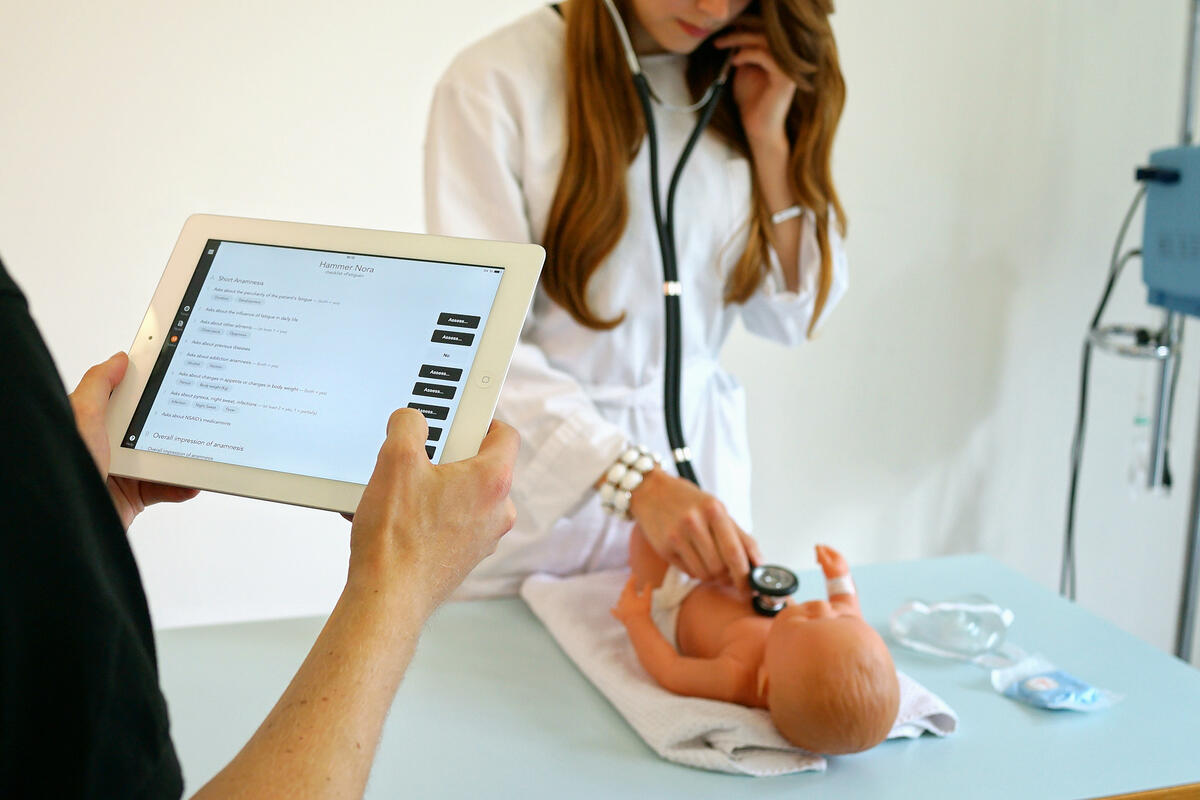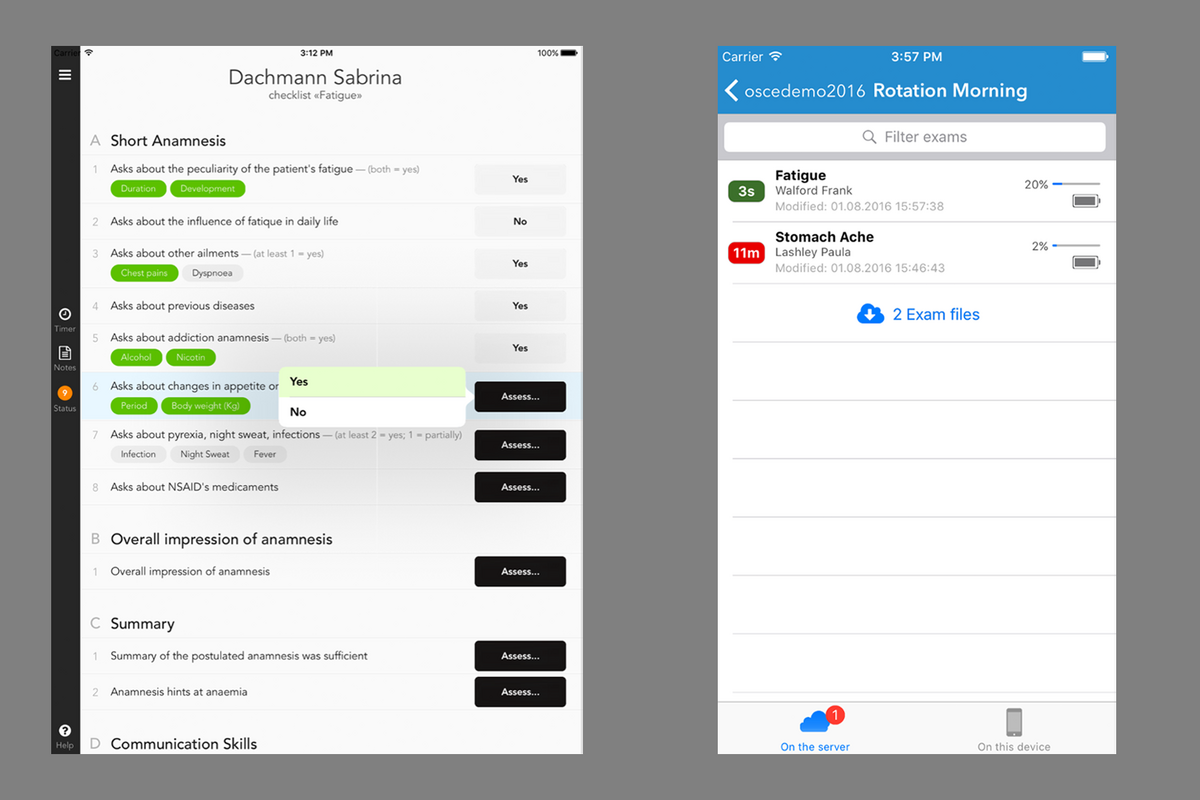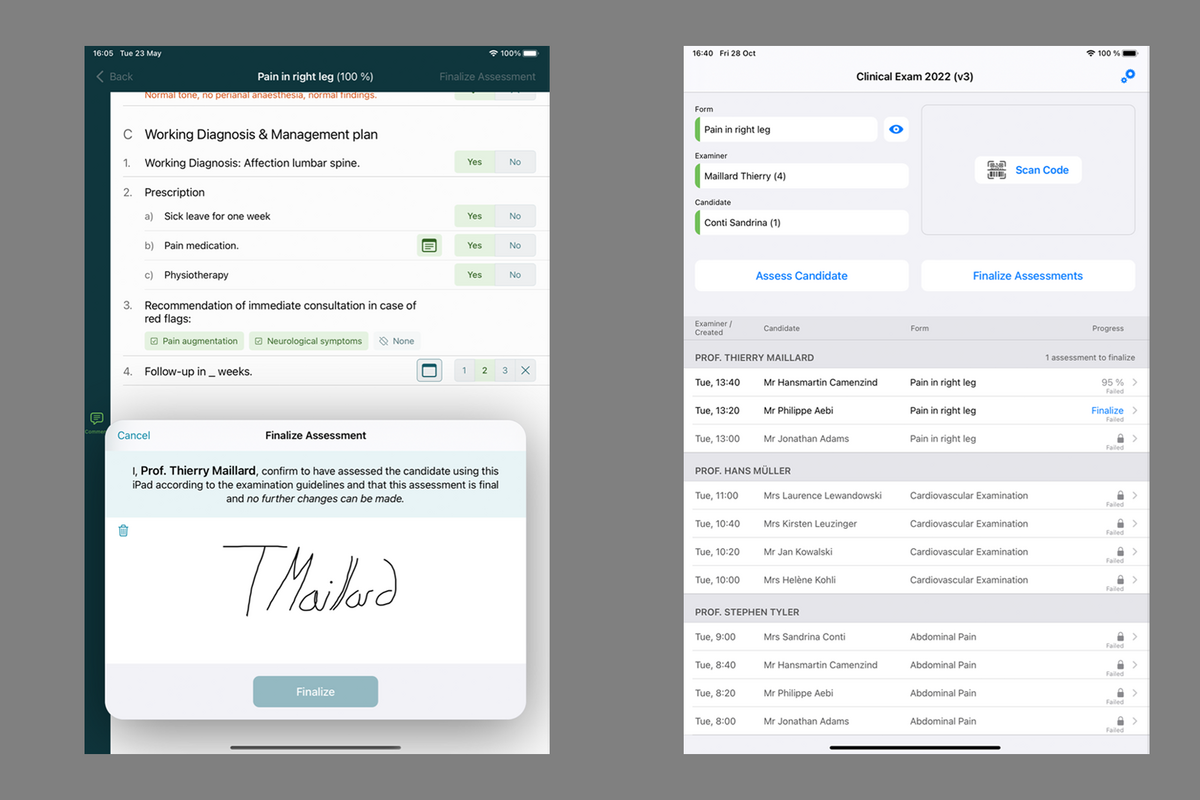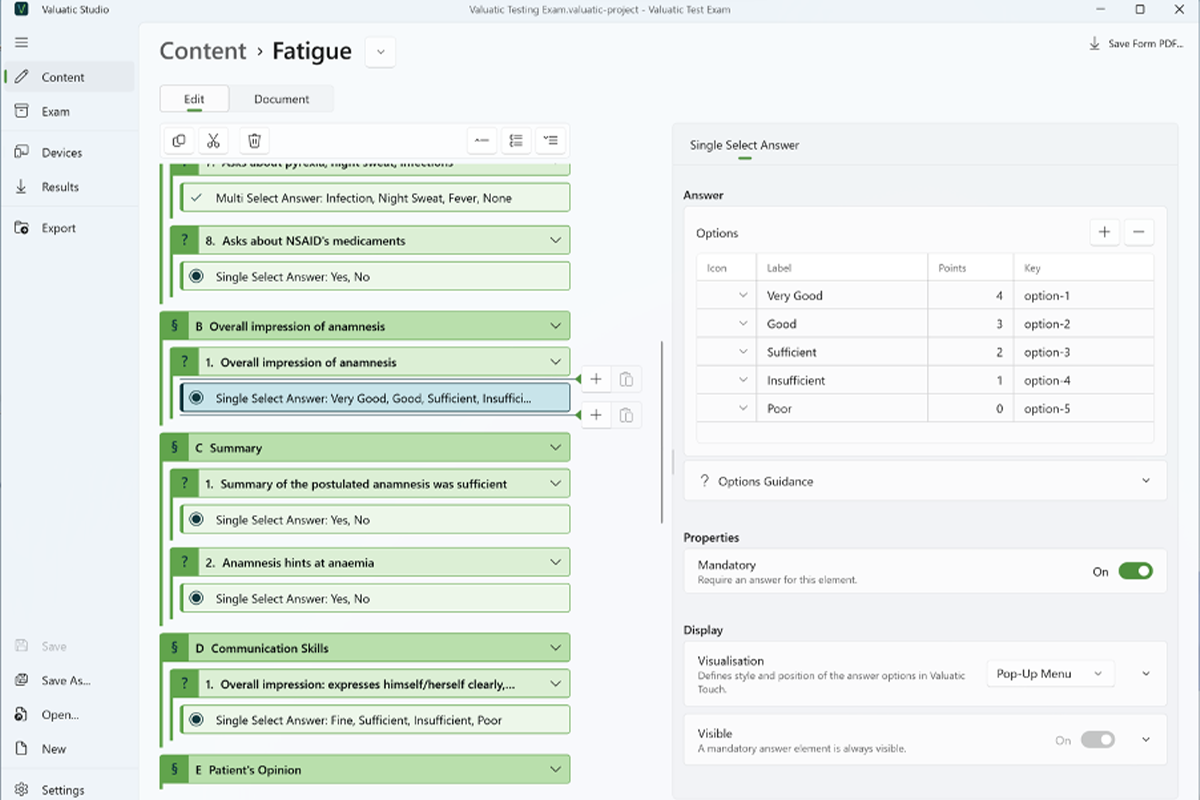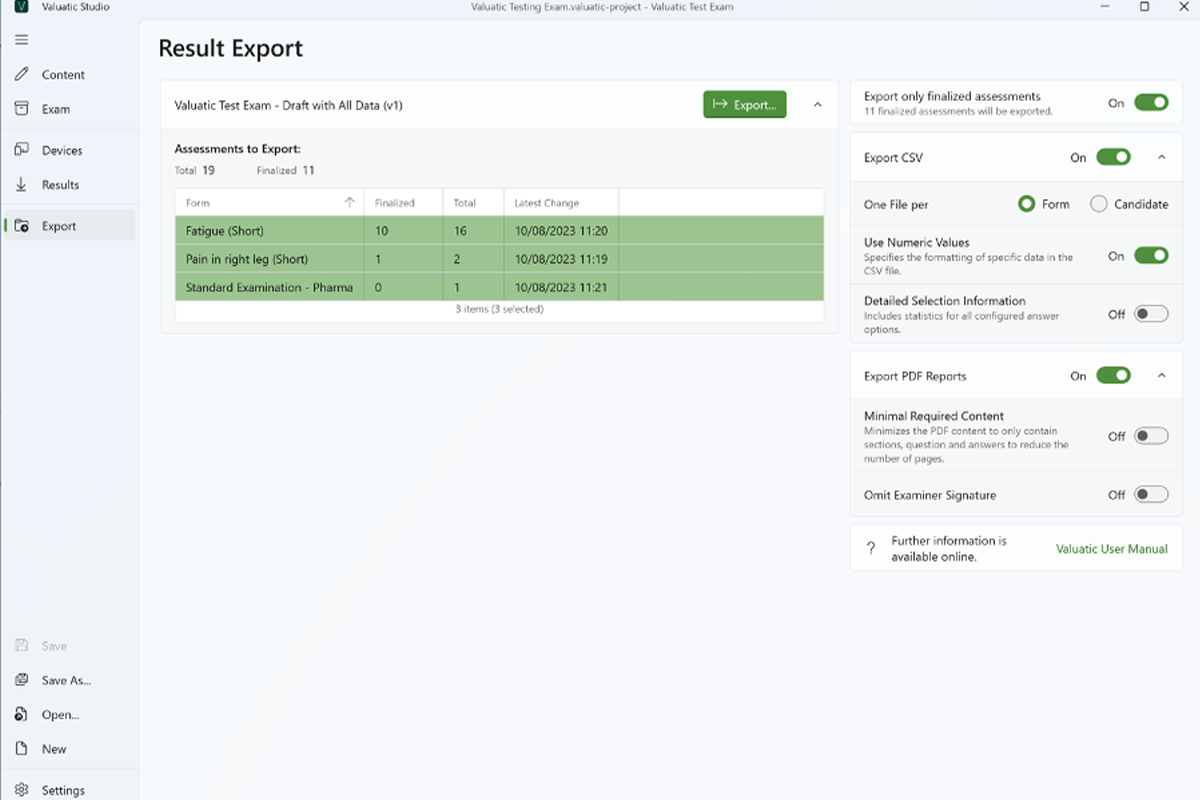The transformation from paper to digital assessments on iPads
About 16 years ago - in January 2009 - the Institute for Medical Education (IML) took the first steps to change the assessment of students in Objective Structured Clinical Exams (OSCEs), which were still done on paper at the time, to a completely digital solution. In collaboration with the Institute for Software at the University of Applied Sciences Rapperswil and with the support of the Switch-AAA programme, various software prototypes were developed and evaluated in several iterations, which made it possible to prepare an OSCE exam digitally, have it assessed on tablets and analyse it on a desktop computer.
Several obstacles had to be overcome during the development: inadequate and error-prone technology (there were no iPads at the time), scepticism towards digitalisation on the part of the examiners, precise conversion of the paper checklists into a digital user interface, and decades of experience with the paper process that needed to be adapted. Fortunately, the benefits of a fully digital process prevailed: no missing or misleading marks, better data quality, faster scoring, and less stressful assessment during the exam thanks to the support provided to the examiners by the software.
The first «real» exams with Examic EOSCE were conducted in the spring of 2012. The feedback was overwhelmingly positive. EOSCE quickly became known nationally and internationally and was used by various institutions worldwide for their OSCEs. The first national federal exam in Switzerland was then conducted with EOSCE in 2014 at five different faculties, in two languages and with 1,200 students.
Valuatic takes over from EOSCE
The functionality and user interface of EOSCE had been continuously expanded over the years, so in 2018 we had to decide whether the technical basis of the software was still sufficiently adaptable for new functionalities or whether a new, modern code base had to be created. The decision to move to a new platform was also the starting point for the Valuatic project, in which we rethought and reassessed all processes within the exam cycle.
The idea was to develop a software that could not only be used within the narrow framework of an OSCE exam, but also offers appropriate functionalities and degrees of freedom for other forms of evaluations, e.g. surveys, interviews or oral exam.
With Valuatic we wanted to create a software system that can:
- create and manage digital forms/checklists;
- import external data (e.g. students or interview partners);
- easily distribute the exam/evaluation data to a large number of tablets;
- carry out the assessment of participants;
- monitor the exam/evaluation centrally;
- collect the results with a single click and export them for further analysis.
These basic functionalities were already available in EOSCE, but they needed to be implemented with more degrees of freedom to make the software more flexible for different application scenarios:
- Extended, powerful forms with different question types, more design options, flexible scoring, etc.
- Flexible exam structure/process without a predetermined schedule, order, or allocation of forms to examiners
- Easier exam distribution without having to manually add exam data to each tablet
- Customisable output with selectable elements and level of detail, as well as the institution's corporate design
- Windows based exam management, as the majority of customers use Windows based computers
- Hardened security and reliability in any exam scenario
It took almost a year to develop the basic concepts, software architecture, user interface and application interfaces. The actual development started in 2019.
Valuatic in use
Already early versions of Valuatic were being used in exams, e.g. at the Medical University of Vienna or the Washington Medical School. Interest in Valuatic grew steadily from 2022, both from partners already using EOSCE and from other interested institutions that wanted to fully digitalise their exam processes.
The Institute for Medical Education (IML) also used Valuatic as a replacement for EOSCE in existing exams, including the federal exams of veterinarians and chiropractors. Valuatic is now used at various institutions in Switzerland, Germany, Canada, Great Britain, the USA and Australia.
The feedback of customers using Valuatic is overwhelmingly positive. They specifically appreciate the degrees of freedom in creating forms with various item types, not being bound to a specific schedule when planning the exams and the reliability of the Valuatic system in case of network failure.
What does the future hold?
However, the development of Valuatic does not stand still: continuous evaluation reveals potential for improvement and many of our partners contact us with requests for new functionalities or adjustments to their exam processes.
Currently, improvements are being implemented that will improve the handling of large and complex exams (e.g. federal exam in human medicine: 7 faculties/locations, 3 languages, 1,500 students).
There is no end to development planned: not only are the technical frameworks constantly changing, but the requirements of exams are evolving also and exams are becoming more diverse. This is why we will continue to release new versions of Valuatic at regular intervals.
